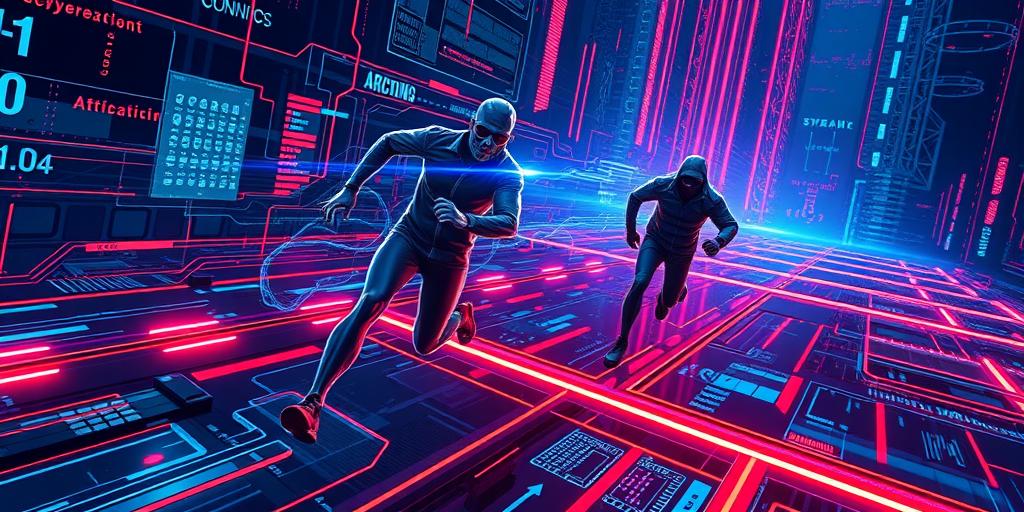Is cybersecurity lagging behind the breakneck speed of technological innovation? This isn’t just a question; it’s a race against time, a digital game of cat and mouse where the stakes are our data, our privacy, and our very way of life. The digital landscape is ever-evolving, from artificial intelligence and machine learning to the Internet of Things and the metaverse, presenting a tsunami of new vulnerabilities for cybercriminals to exploit. Are our defenses robust enough to withstand this onslaught? Buckle up, because we’re about to dive into this critical issue and explore the challenges and opportunities that lie ahead.
The Expanding Attack Surface: A Cybersecurity Nightmare
The rapid pace of technological advancement has dramatically expanded the attack surface for cybercriminals. What exactly does this mean? Think of it like this: every new device, application, and software update adds another potential entry point for hackers. The Internet of Things (IoT) alone represents a vast and vulnerable network of interconnected devices, many lacking basic security protocols. Smart homes, smart cars, and wearable technology all contribute to this ever-growing digital frontier where cyber threats lurk around every corner. The sheer volume of potential vulnerabilities makes it exceedingly difficult for cybersecurity professionals to stay ahead of the curve. This problem is further exacerbated by the increasing sophistication of cyberattacks. We are witnessing more advanced techniques such as AI-powered malware, zero-day exploits, and highly targeted phishing campaigns.
Exploiting Zero-Day Vulnerabilities
Zero-day exploits are particularly troubling. These are vulnerabilities that are unknown to software developers and vendors. Hackers often exploit these weaknesses before patches are available, leading to devastating consequences. Because these vulnerabilities are unknown and therefore unpatched, defenses are slow to develop and deploy against zero-day attacks.
The Rise of AI-Powered Cyberattacks
Artificial intelligence is a powerful tool, capable of automating tasks, analyzing data, and solving complex problems. Unfortunately, cybercriminals are increasingly using AI to enhance their malicious activities, enabling them to launch highly sophisticated and personalized attacks at an unprecedented scale. AI can be used to identify vulnerabilities, create convincing phishing emails, and automate the process of launching distributed denial-of-service (DDoS) attacks. The result is a new era of cybercrime that is faster, more efficient, and harder to detect and defend against.
The Cybersecurity Skills Gap: A Critical Deficiency
The cybersecurity industry is facing a significant skills gap. There’s a dire shortage of qualified cybersecurity professionals to keep pace with the growing number of threats. Simply put, there aren’t enough people with the right skills and experience to effectively manage and protect our increasingly complex digital infrastructure. This shortage is amplified by the rapid evolution of cyber threats, which demands constant learning and adaptation from those working in the field. The need for specialized skills and certifications highlights the high demand for competent individuals in the cybersecurity workforce. This skills gap leaves many organizations vulnerable to attack.
The Need for Lifelong Learning
The ever-changing nature of cyber threats necessitates continuous learning and upskilling in the cybersecurity profession. Cybersecurity professionals need to stay ahead of the curve and adapt their strategies to account for emerging threats and technologies. Staying current requires cybersecurity professionals to take advantage of continuous professional development programs and workshops to keep their skills sharp and relevant. Failure to do so can put organizations at an increased risk of successful attacks.
Innovation in Cybersecurity: A Necessary Response
While the challenges are significant, there’s also a wave of innovation in cybersecurity that offers promising solutions. AI, the same technology being used by attackers, is being leveraged to strengthen defenses. This involves using AI to detect anomalies, predict attacks, and automate incident response. Machine learning algorithms are capable of identifying patterns and behaviors that might indicate malicious activity, allowing for quicker detection and prevention of attacks. This proactive approach is essential to combatting the ever-evolving landscape of cyber threats. There is a concerted effort to improve security in the design phase of software and hardware, moving away from a reactive approach of patching after a vulnerability is discovered.
AI-Powered Security Solutions
The integration of AI and machine learning into cybersecurity systems is revolutionizing the field. These technologies can help identify and respond to threats much faster than humans, and can adapt to new threats as they emerge. This enables the development of more proactive security solutions. AI and ML provide tools to detect and remediate vulnerabilities proactively before attacks can occur.
Bridging the Gap: Collaboration is Key
The battle against cyber threats can’t be won alone. Collaboration between governments, businesses, and individuals is essential. Organizations need to invest in robust cybersecurity infrastructure, educate their employees about security best practices, and share threat intelligence with one another. Governments play a crucial role in developing cybersecurity policies, standards, and regulations. Individuals should be encouraged to practice good online hygiene and be aware of the risks associated with cyber threats. A collective approach involving governments, organizations and individuals working together will greatly strengthen our collective digital security.
This isn’t just a technological challenge; it’s a societal imperative. By working together and embracing innovative solutions, we can hope to stay ahead of the curve and build a safer, more secure digital future. Let’s make sure that cybersecurity keeps up with the speed of innovation, or even surpasses it. Stay vigilant, stay informed, and stay safe!




